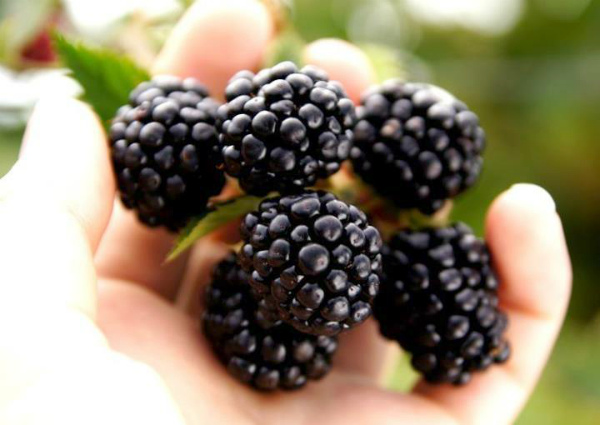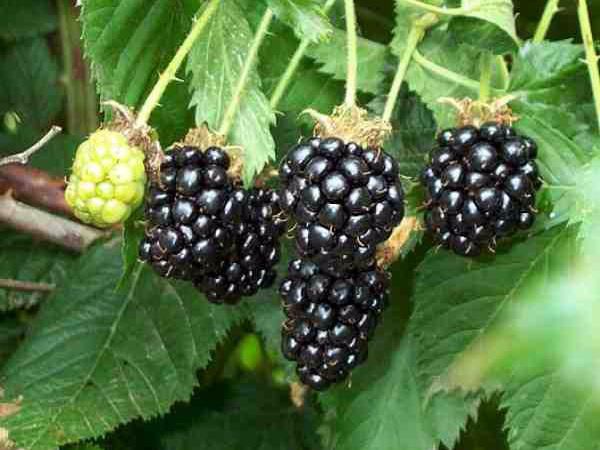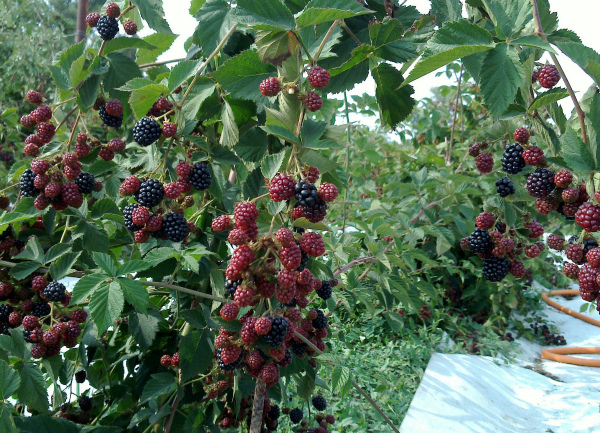The most popular remontant blackberry variety Ruben
Content
Description of the variety
These berry bushes have the ability to bring a crop twice a year: young shoots give fruit in June, and last year's whips will delight with the harvest closer to September. Immediately after appearing on the Russian market, the variety made a real sensation: still, there is no need to build a winter shelter, the whips can simply be cut off. But this is not always the case.
The variety description includes the following features:
- two-time fruiting in one agricultural season;
- upright bush, not prone to weaving, well studded;
- blackberries form shoots up to 2.5 m high, the bush is compact, but powerful enough;
- the flowers are white, rather large, reaching 6 cm in diameter. Flowering begins already in April (if the bushes were planted in greenhouses), or closer to July (in open areas);
- an important characteristic is low frost resistance (only a covering method of growing is acceptable).
Advantages and disadvantages
Although this variety does not yet have a rich history, given its novelty, its main advantages are already clearly visible:
- extremely high yield - up to 6 kg of berries are harvested from one bush (with the usual rates of 3-4 kg);
- this repairing blackberry tolerates winters well if you organize a decent shelter for it, or simply cut off the entire above-ground part of the bush, leaving only the roots;
- as already mentioned, this variety bears fruit twice per growing season.
But, despite the visible and objective advantages, the Ruben blackberry also has weaknesses:
- this blackberry is characterized by problems with pollination of flowers: if dry, dry weather persists for a long time, the volumes of the second harvest may suffer;
- the second fruiting can be very delayed - until mid-November. But with the arrival of the first frost, the ability of the berries to develop freezes, and as a result, part of the crop is buried under the first layer of snow.
Care features
Planting blackberries of this type should be done in shaded places so that the rays of the sun only slightly illuminate the bushes. The plant is not picky about the composition of the soil - planting can be carried out in any suitable place on your site.
If the plant is properly cared for, you can easily get large berries, weighing up to 15 grams each. Blackberry Ruben needs regular and sufficient, but by no means excessive, watering. The ideal option would be to organize drip irrigation for blackberries.
After fruiting is over, the Ruben bushes should be cut off, removing all the shoots, leaving only the root system in the soil. Breeders assure that a plant treated in this way can survive the winter even without any shelter, just under the snow. However, for the sake of additional protection, it is still better to protect the roots from severe frosts.
Needs "Ruben" in additional dressing: in the spring under each bush you need to add about 7 kg of humus and 50 grams of ammonium nitrate. This amount of fertilizer will be enough for the plant to develop successfully for a whole season.
Diseases and pests
The Ruben variety practically does not suffer from disease damage.Occasionally, you can find individual berries, slightly touched by traces of gray rot. This happens on those fruits that have been in contact with the soil for a long time. Basically, the blackberries growing on the powerful straight shoots of Ruben are pure and extremely high quality.
If we talk about insects, then sometimes you can see traces of leaf aphids.
In case of pests, the bushes are sprayed with a weak solution of tobacco dust (200 g of dust is infused in 10 liters of water for 2 days). The resulting infusion is thoroughly filtered, 50 grams of laundry soap is added and the resulting product is sprayed on the bushes.
Those shoots that are heavily affected by insects are cut off and, without wasting time, burned.
And even though “Ruben” is a recent guest on the garden plots of Russians, many gardeners have already come to love this blackberry, for its unpretentiousness and high yield. Try and grow such a bush at your dacha, perhaps it is you who will be able to get the largest berries ever seen in our area.



